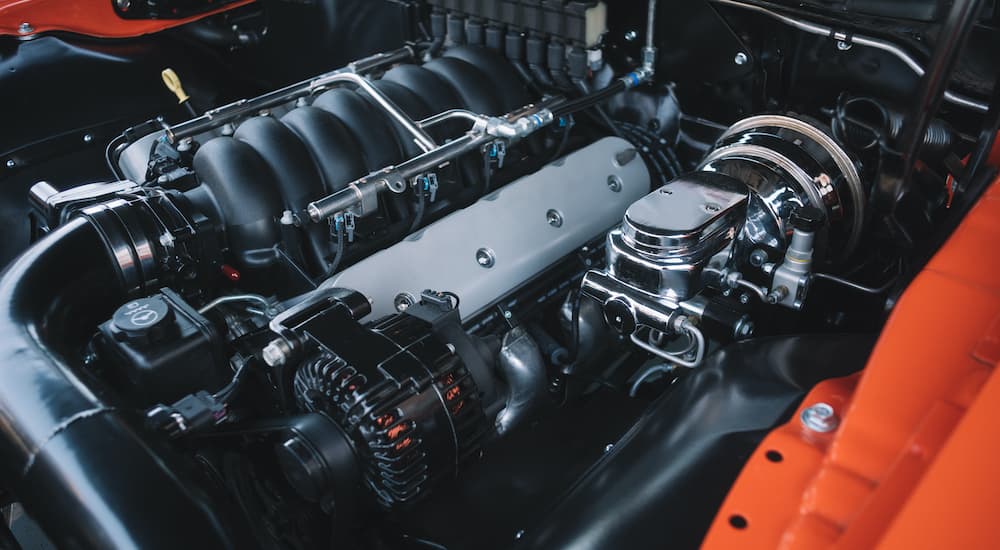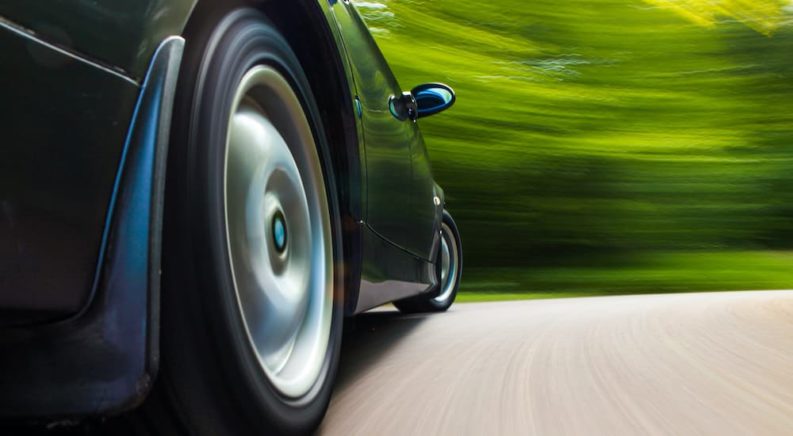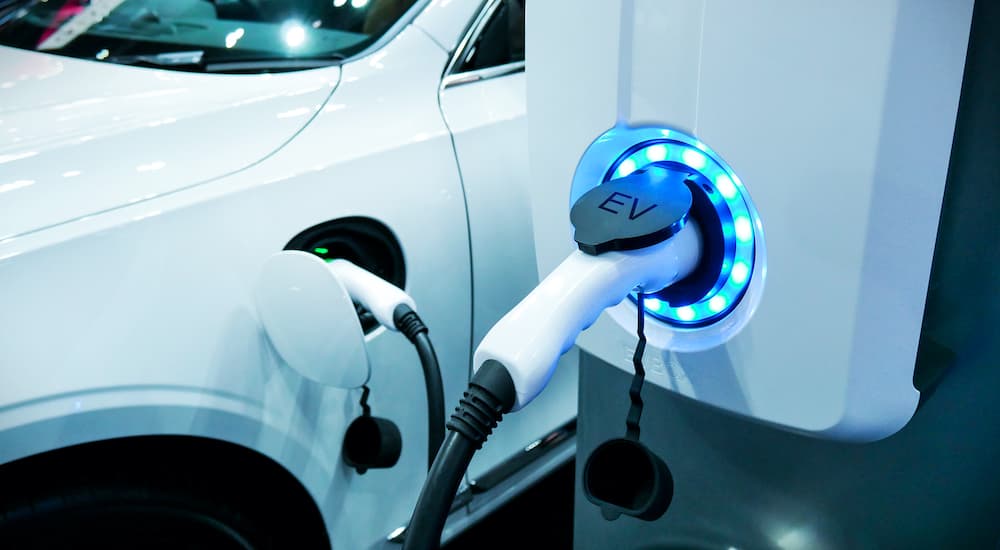The world has changed dramatically over the last decade, and at least in the case of automotive technology, that change has been incredibly positive. Technologies that would have seemed like pure fantasy two decades ago are now commonplace in the propulsion, safety, and connectivity systems of everyday cars you see on the street or find at your local used car dealer.
Engines operate at close to their maximum possible thermodynamic efficiency while producing more power than ever before. Practical electric family cars manage to outperform even the most powerful internal combustion-powered supercars. Vehicles can avoid accidents and save lives of their own accord, with widespread pedestrian detection and automatic braking systems. Vehicles with internal wifi hotspots are commonplace and allow their occupants to connect to the wider world whenever they want, almost anywhere they want. Things have come quite a long way in a very short time.
More Efficient Engines
The most exciting developments surrounding automotive technology have been in the way cars propel themselves down the road. In the last decade, we have seen the beginning of what is almost certainly a new epoch in the automotive industry and automotive history. The internal combustion engine is not maxed out yet, not completely, but the future is quite clearly electric.
Tighter emissions regulations and the constant expectation of more horsepower have given rise to direct fuel injection systems paired with continuous valve control – two formerly exotic technologies that are now commonplace across the industry. These technologies allow engines to take maximum advantage of every drop of gasoline while at the same time becoming simpler mechanically.
Continuous valve control is a further development of variable valve timing, offering much greater flexibility and control over when and how long the engine valves open for intake air and exhaust gases. While not necessarily offering significant improvements in peak performance, these systems allow an engine to optimize its operation for every environment and every demand. Power and fuel economy are both enhanced dramatically because the engine can effectively retune itself instantaneously. Whenever the driver needs power or efficiency, the valves can operate based on that need.
Further technologies unveiled this past decade, such as the Freevalve cylinder heads that operate without camshafts and variable displacement engines, promise to wring the absolute maximum out of the centuries-old internal combustion engine concept. While most drivers may not be aware of exactly what is going on under the hood, these are truly exciting developments that everyone has benefitted from.

Advanced Transmissions
The drivetrains that deliver the power from the improved engines in modern cars have also been transformed. In 2010, six-speed transmissions were the gold standard, but now several separate transmission technologies have helped minimize drivetrain losses and maximize efficiency. These include better automatic transmissions that now include superior programming and more gears. These are cheap to produce but provide performance similar to high-end transmissions such as dual-clutch units.
Speaking of dual-clutch transmissions, those supercar-derived units reached the mass market over the past decade – albeit with a few missteps in the attempts at building overly cheap dry-clutch systems earlier in the decade. Now, true wet-clutch transmissions can be found in vehicles from hot hatches to hybrids, offering even faster shifts than the original units found in cars like the Ferraris of the late 2000s.
The Continuously Variable Transmission, or CVT, is another type of “gearbox” that has had a renaissance in the past decade. CVTs technically have no gears at all, just a band that connects two opposing cones. Depending on where the band is riding on the rotating cones, the gear ratio shifts. This setup allows for virtually unlimited gear ratios and no gap in power delivery between them. That all sounds peachy, but in reality, it took a few early mistakes before CVTs started working as advertised. Despite early reliability issues and a very different driving experience compared to normal transmissions, modern CVTs are finally providing the benefits they were always theoretically capable of.
Enthusiasts grind their teeth amid the continuing decline in the number of cars available with fun and involving manual transmissions, but at least from an engineering perspective, the best gearbox is no gearbox at all. The most advanced transmissions of the past decade are those used on electric vehicles, which have high redlines and flat torque curves that allow them to dispense with the need for transmissions altogether.
EV Battery Technology
Despite the huge strides made with conventional vehicles in the past decade, by far the most startling disruption in the automotive industry has been the emergence of practical electric cars. In 2010, electric vehicles were an expensive and impractical curiosity – playthings for the rich at best and simply a fool’s errand at worst. But over the last decade, the industry surrounding EVs has utterly transformed. At the beginning of the decade, electric vehicles still used repurposed laptop and cellphone battery technology. But now, they have their own dedicated cell chemistry and construction. Battery prices have gone down by an order of magnitude, while their capacity, charge rates, and performance have gone up by similar amounts.
While still more expensive than comparable internal combustion engine vehicles, electric cars and trucks offer far superior performance, smoothness, and convenience in everyday life. For those with a garage, trips to the gas station become a quaint memory as their vehicle charges while they sleep. And on longer trips, interstate charging stations can now dump hundreds of miles of extra range into electric vehicles in the time their owners have a bathroom break and eat lunch. While electric road trips still aren’t quite as easy as conventional ones, that is rapidly changing as both the technology and the required infrastructure improve by leaps and bounds.
Active Safety Features
When you look over the history of the automobile, few changes stand out like those relating to safety. The kinds of designs that were commonplace in the ’30s or ’40s would make the modern car owner cringe, from the lack of seatbelts to the solid steering columns that all too often impaled drivers. As seatbelts, crumple zones, airbags, and basic driver aids like traction control and ABS became commonplace, it became hard to imagine making cars even safer. But then the last decade happened.
Driver-assist systems have now gotten to the point where they are increasingly becoming a preview to semi-autonomous vehicles. Automatic braking, lane keeping software, adaptive cruise control, and other tech features are now virtually universal in new cars and easy to find in recent used cars. The best systems can even drive the car from freeway entrance to freeway exit with no driver input, including stop and go traffic in the middle of the journey.
One Giant Leap for the Auto Industry
Modern automotive technology is something to behold, largely because so much of it has seemingly happened so quickly. Incredibly efficient gasoline powertrains, lightning-fast electric vehicles, and self-driving vehicles went from wishful thinking to reality in just the span of a decade. Vehicles that would have been considered optimistic as concept cars at an early 2000s auto show can now be found for sale at used car lots across the country. It is difficult to think of a single decade that has seen more improvements to cars than the past ten years.





